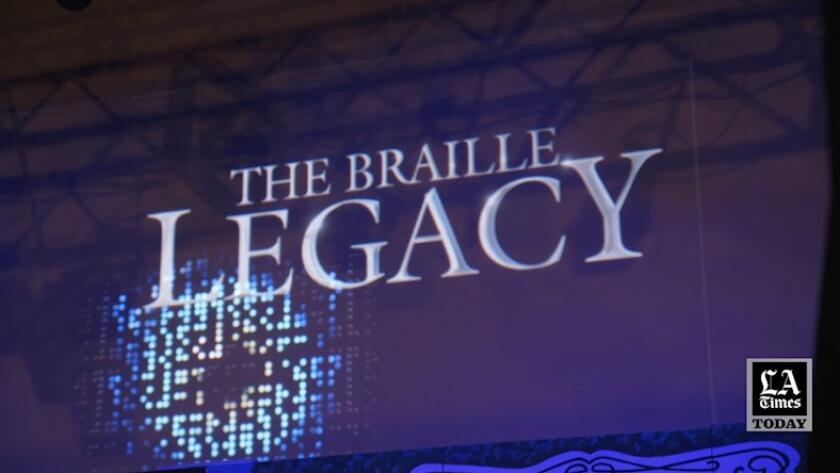
- Share via
Clad in a gray overcoat and tidy ascot, Ronnie Chism strides confidently in front of the camera. Chism pauses, then begins to tap the floor with his white cane, creating a rhythmic beat he raps along with.
Tap tap. Tap tap. Tap tap.
That’s the sound of my stick.
Tap tap.
Navigating the streets,
See the world through my taps.
Tap tap.
Since my senses are heightened,
My eyes are my brain.
Tap tap.
Feeling me around the world
Through the taps of my cane.
Chism wrote and will perform this song, “Sounds of My Cane,” for “The Braille Legacy,” a new production at Inglewood’s Miracle Theater premiering June 24. Written by French author Sébastien Lancrenon, the musical tracks the story of Louis Braille, the inventor of the alphabet for the blind. The show first premiered in London at the Charing Cross Theatre in 2017. For its Los Angeles debut, a troupe known as Theatre by the Blind will stage “The Braille Legacy” — marking the first time the work has ever been performed by a visually impaired cast.
Set in the early 1800s, the story follows Braille from his days at France’s Institute for Blind Youth, where visually impaired students trained to be basket weavers. Braille, who was born with sight, experienced an eye injury as a young child. The injury became infected and spread to his other eye, which led to complete blindness. As a teenager, the voracious bookworm became frustrated with the cumbersome, inadequate technology available to blind and visually impaired readers. So he modified the Charles Barbier method known as sonography and developed the Braille alphabet despite little support from his teachers. He ascended to teach at the institute after his system was finally accepted. “‘The Braille Legacy’ is a story that needs to be told in as many places as it can,” says Coco Atama, who plays Braille in the musical.
Started in 2008, Theatre by the Blind is the only company in the United States fully composed of blind actors. Matthew Saracho, who plays Monsieur Dufau in “The Braille Legacy,’ says that the troupe’s ethos goes beyond acting. “We are all one big, beautiful family,” he says. “We don’t just come in here, practice our part and go. Everybody’s looking out for each other. I believe it’s going to open more eyes than I ever imagined in my wildest dreams. People are going to walk out and say, ‘You know what? Now I know what this is all about.’”
- Share via
Watch L.A. Times Today at 7 p.m. on Spectrum News 1 on Channel 1 or live stream on the Spectrum News App. Palos Verdes Peninsula and Orange County viewers can watch on Cox Systems on channel 99.
Coco Atama, 26, of Burbank
College student, actor, social media creator, skateboarder, comedian
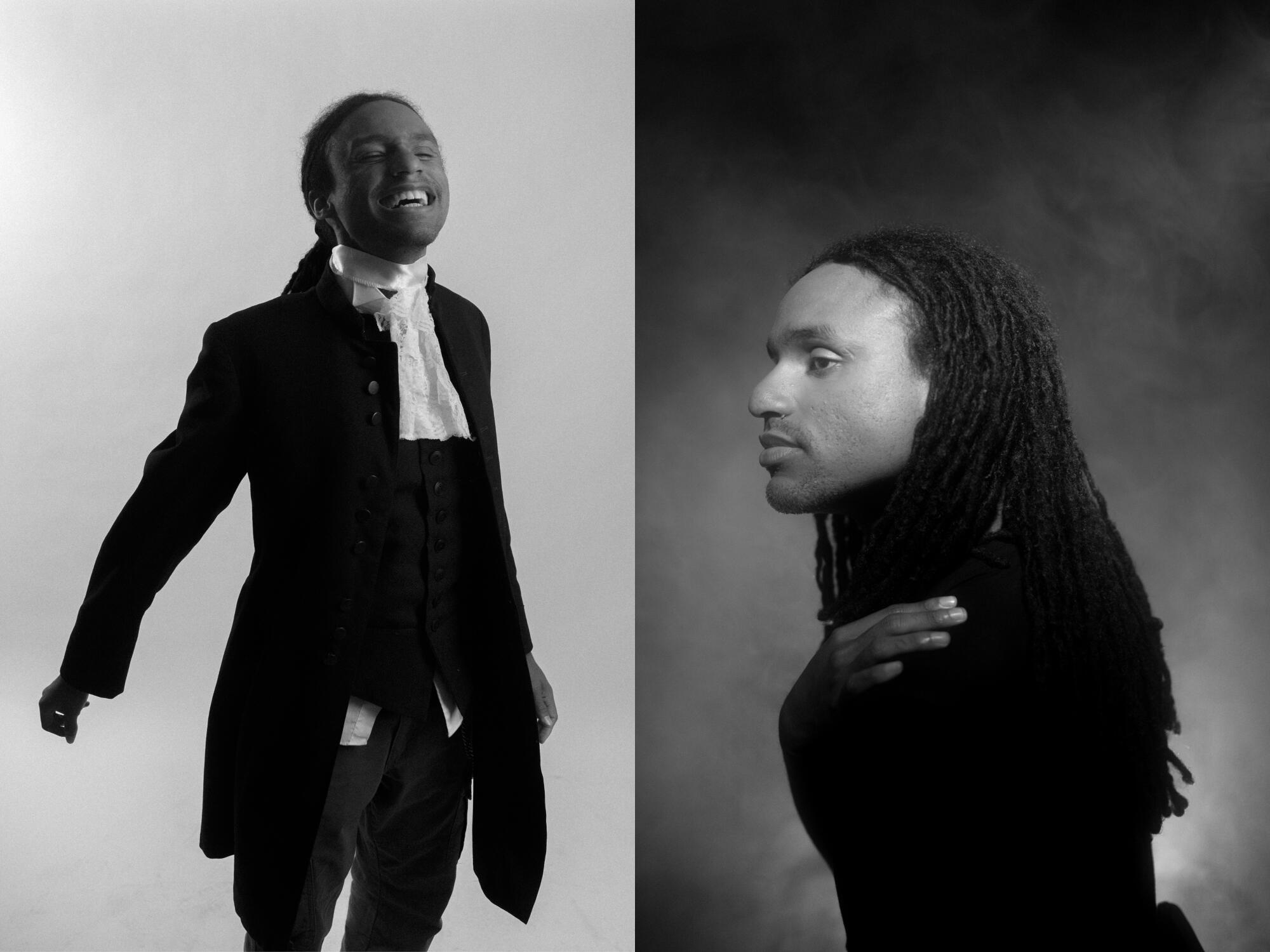
Coco Atama plays the complicated titular character at the center of “The Braille Legacy.” “Louis is not this golden, godlike figure,” as Atama puts it. “Louis is a real person. He has a bit of a temper on him. He is a bit of a know-it-all. He can sometimes be very prideful, stubborn, cocky, arrogant.”
Currently starring in a musical and working on two college degrees, with a prolific social media presence as a skateboarder, Atama says he shares a distinctive quality with the character he plays onstage: a strong will. “If there’s something that I want, I will move heaven and earth to make it happen, no matter who or what stands in my way, no matter how much I have to bleed, sweat and cry,” Atama says. “And I think Louis is the same way.”
“The Braille Legacy” is an important story, Atama says, in that it shows blind people as complicated, fully realized individuals. “Blind people are people first and blind second,” Atama says. “So to show how one of the most useful tools in a blind person’s arsenal was created and overall how it shifted the society,” he adds, is crucial.
Malaika Mitchell, 42, of Watts
Event planner, professional actor, college student majoring in psychology and education
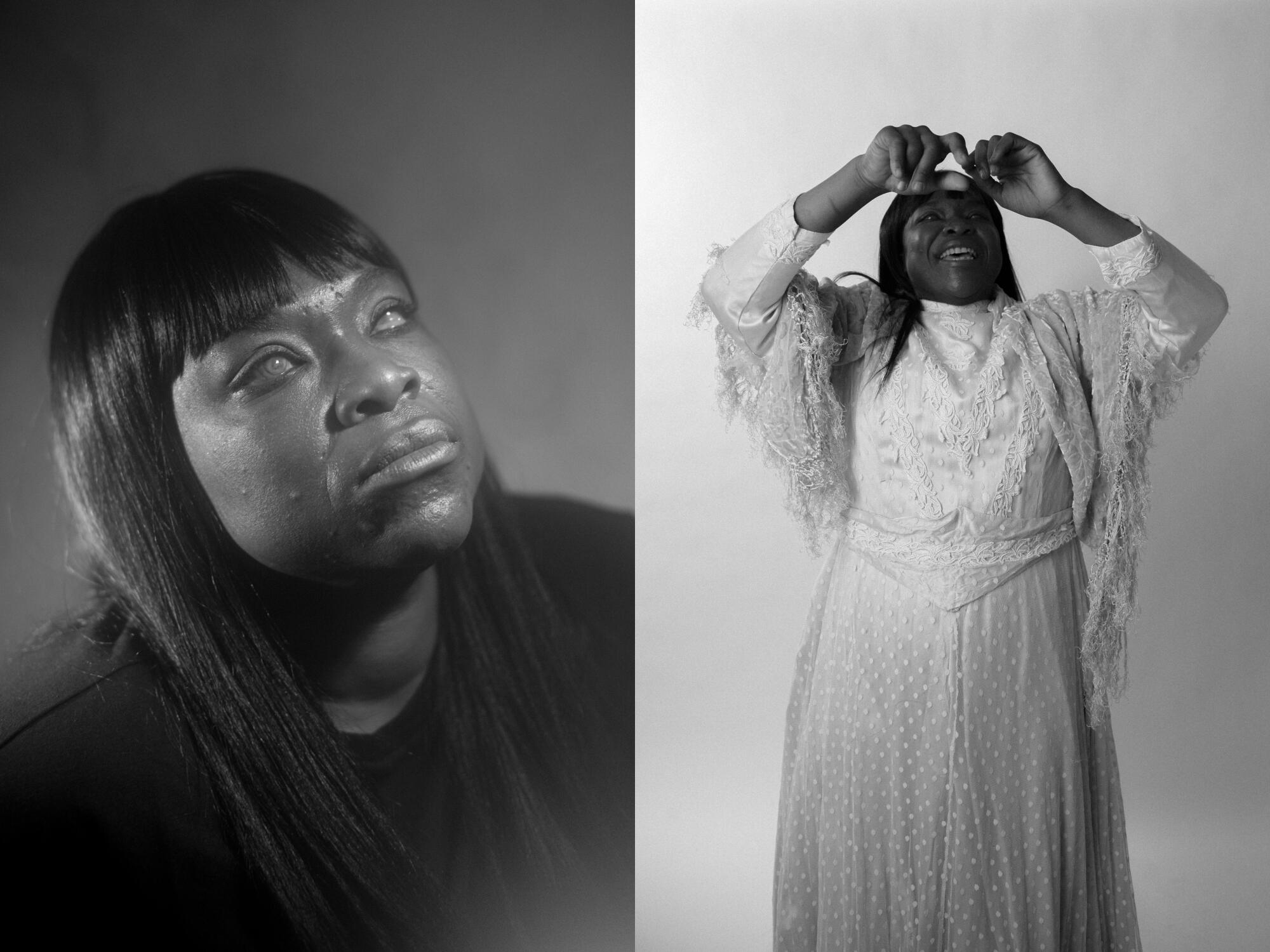
The trajectory of Rose, Malaika Mitchell’s character in the play, reflects an issue the actor sees manifesting in her own community. Rose, who is sighted, first connects with Louis Braille while touring the institute with her father, Captain Barbier. She comes to his defense from a bully, and the two fall in love. Years later, she holds his hands on his deathbed. “[Rose] being sighted and falling in love with someone blind, it’s like our reality,” Mitchell says. “I have a lot of friends in the same situation. It’s a stigma of never wanting to be with someone that’s blind. In fact, a lot of blind people don’t want to be with someone who’s blind.”
For Mitchell, “the blind community, the disability community, my community is still not recognized as much as it should be. The story of Louis Braille tells our side too. It’s the first blind theater group to do it, and I’m a part of that. That’s special.“
Matthew Saracho, 33, of El Sereno
Volunteer at the Braille Institute computer lab
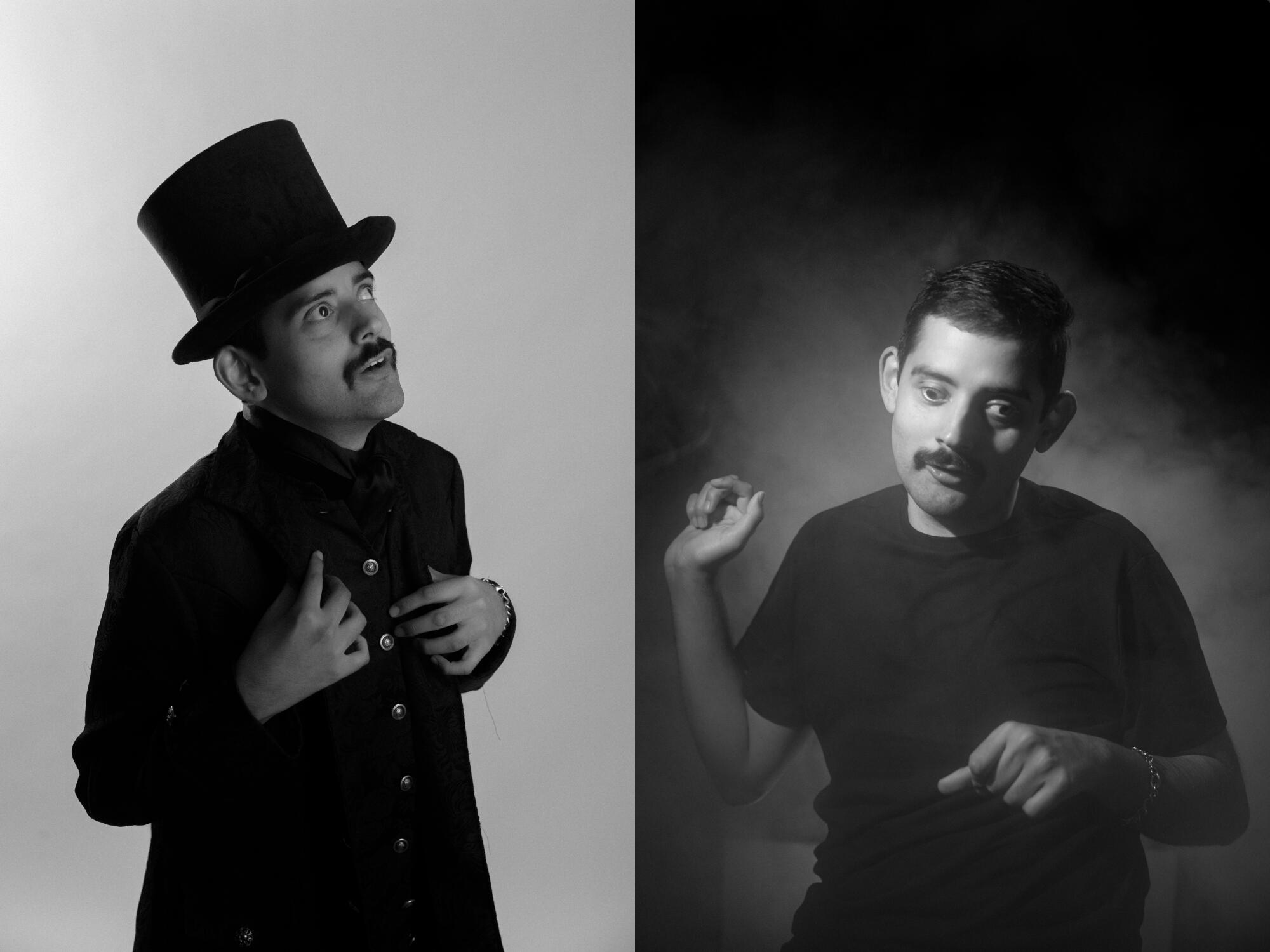
Television and movies didn’t impress Matthew Saracho as much as the radio growing up. These days, he says his personality and stage presence alike are deeply rooted in the sounds of 1960s and ’70s radio disc jockeys like the Real Don Steele, “Shotgun Tom” Kelly and especially Wolfman Jack.
His role as Monsieur Dufau, the Institute for Blind Youth headmaster that banned the Braille method, claiming it made blind children too independent, was a challenge.
“I got to tell you it really helps you see outside yourself, and especially me, with this character,” Saracho says of Dufau, a man “who has no compassion for any of the kids.”
While playing Dufau, Saracho also found himself reflecting on his younger years and what he was and wasn’t allowed to pursue back then. “It brings back a lot of memories because the one regret I have now, looking back, is that I really didn’t get to participate in anything theatrical or musical in high school or middle school, because my mom was so fixated on me having to learn math like algebra or geometry,” Saracho says. “She wanted me to do it like everybody else.”
Olena Calderon, 37, of Van Nuys
Massage therapist
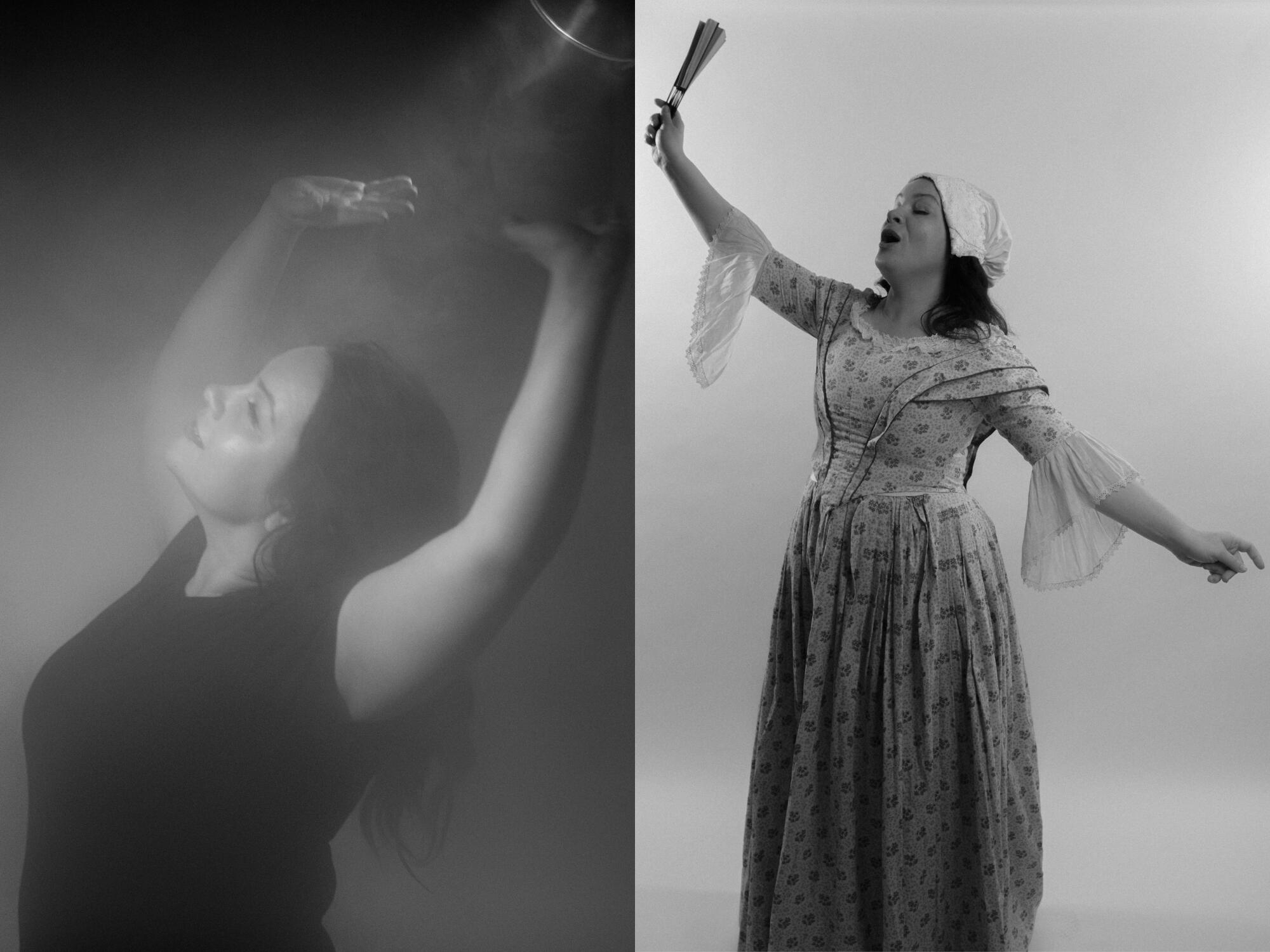
A native of Kharkiv, Ukraine, Olena Calderon plays someone in “The Braille Legacy” who has little understanding of the blind community. She describes her character of Madame Barbier, the wife of Captain Barbier, as “pretty shallow” and representative of society’s “ignorance” when it comes to the blind community. But her character takes a surprising turn.
Calderon, who has been part of the company for nearly three years, believes the musical “rewards not just me, but the whole blind community. It opens up to everyone how society treats us. We want to be people. That’s what ‘Braille Legacy’ says, and that’s what I say to everybody.”
Julio Hoyos, 23, of Los Angeles

As a fifth-grader, Julio Hoyos was galvanized by the story of Nick Vujicic, a Christian evangelist with no arms or legs. “He said life is all about choices, and you don’t have to give up simply because you have a disability,” says Hoyos. “He played a major role in me accepting the fact that I was blind and that I was just going to do things differently in order to achieve my goals and dreams.”
Hoyos never imagined that he might pursue acting, though. “I have to admit, I don’t think I was ever an aspiring actor,” he says. “I only did this because I heard about this group.” In the musical, he plays Gabriel Gauthier, who started out as Braille’s nemesis and became a lifelong friend. Gauthier was at Braille’s bedside, along with Rose, when he died of tuberculosis at age 43.
Hoyos says he especially likes being “in a play that’s about the blind community finally finding a way that makes it easy for them to read and write in a matter of seconds.”
Rex Lewis-Clack, 26, of Malibu
Professional musician
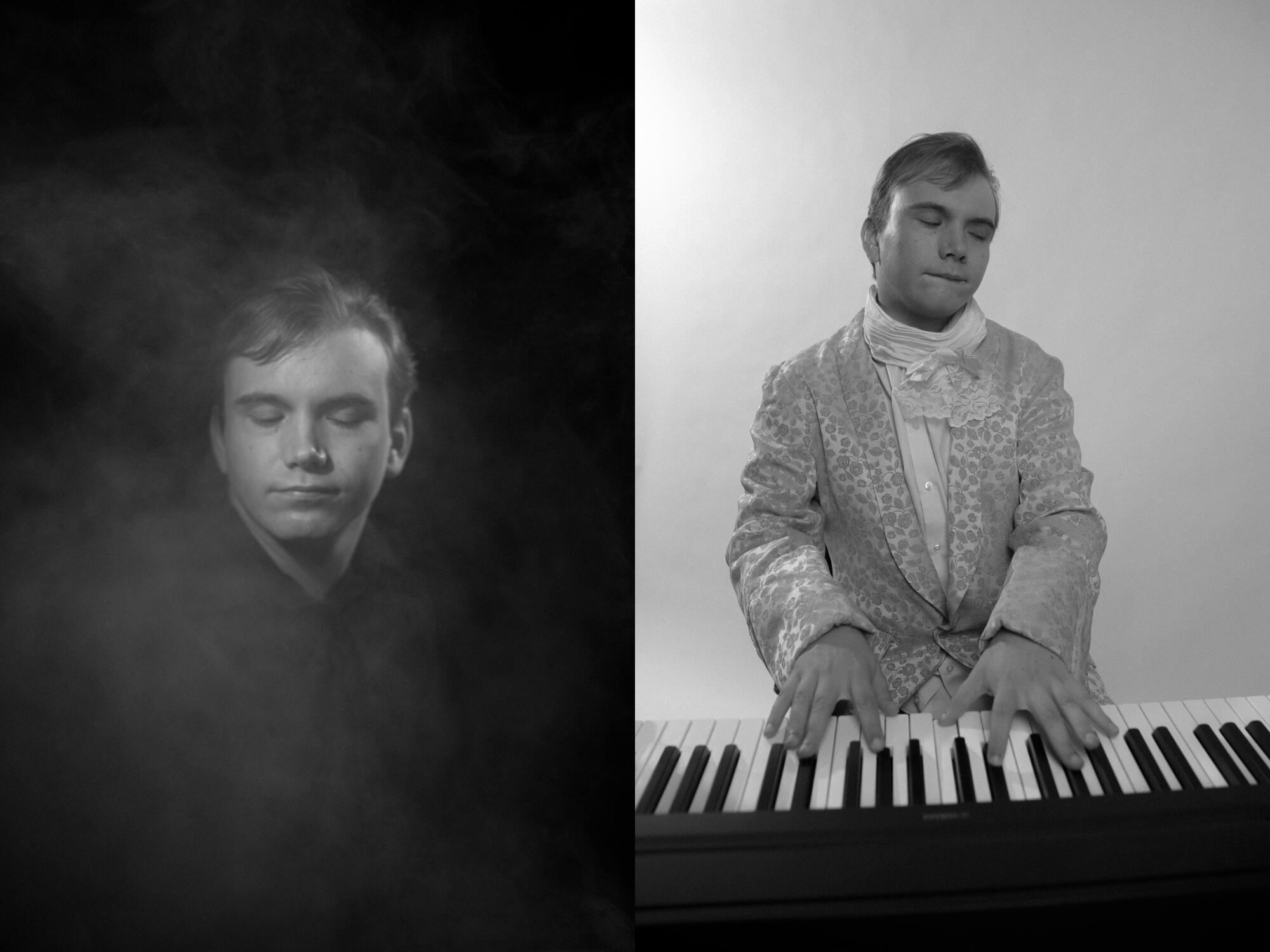
Rex Lewis-Clack, a person with autism, is considered a “prodigious musical savant,” a term used to describe someone with extraordinary abilities while experiencing major impairments in others. “I could play piano before I could say ‘Mama,’” says Lewis-Clack, who was on “60 Minutes” at the age of 7 for his skills as a musician. In “The Braille Legacy,” Lewis-Clack plays keyboards and sings. He considers Mozart an inspiration not only “because he was totally in love with music,” but also because the composer “had the most joyful laugh.”
Kenny Lee of Hawthorne
Professional actor, comedian, motivational speaker, dance teacher
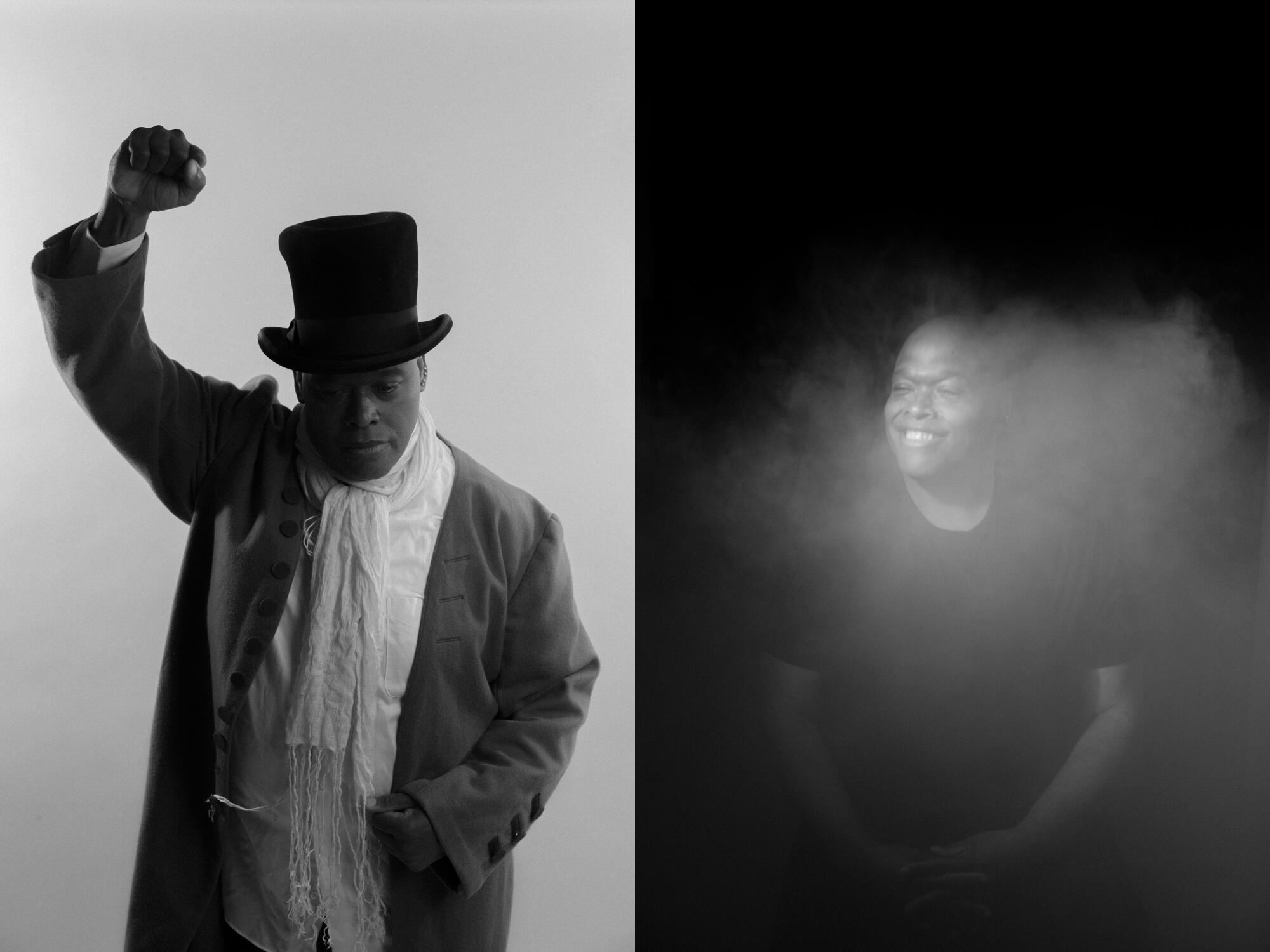
During his lifetime, Louis Braille found an advocate in Dr. Pignier, the institute’s empathetic headmaster who replaces Dufau and goes on to help students succeed. Like his character, Kenny Lee is an outspoken and dedicated educator. As a dance teacher to students living with disabilities, Lee “want[s] them to do all the things that everybody else does. And they should never feel that they can’t do it,” he says. “They shouldn’t feel stuck. They should be able to do what everybody else does.”
Barbara Harrison, 63, of Claremont
Proprietor of Purple Leaf Jewelry
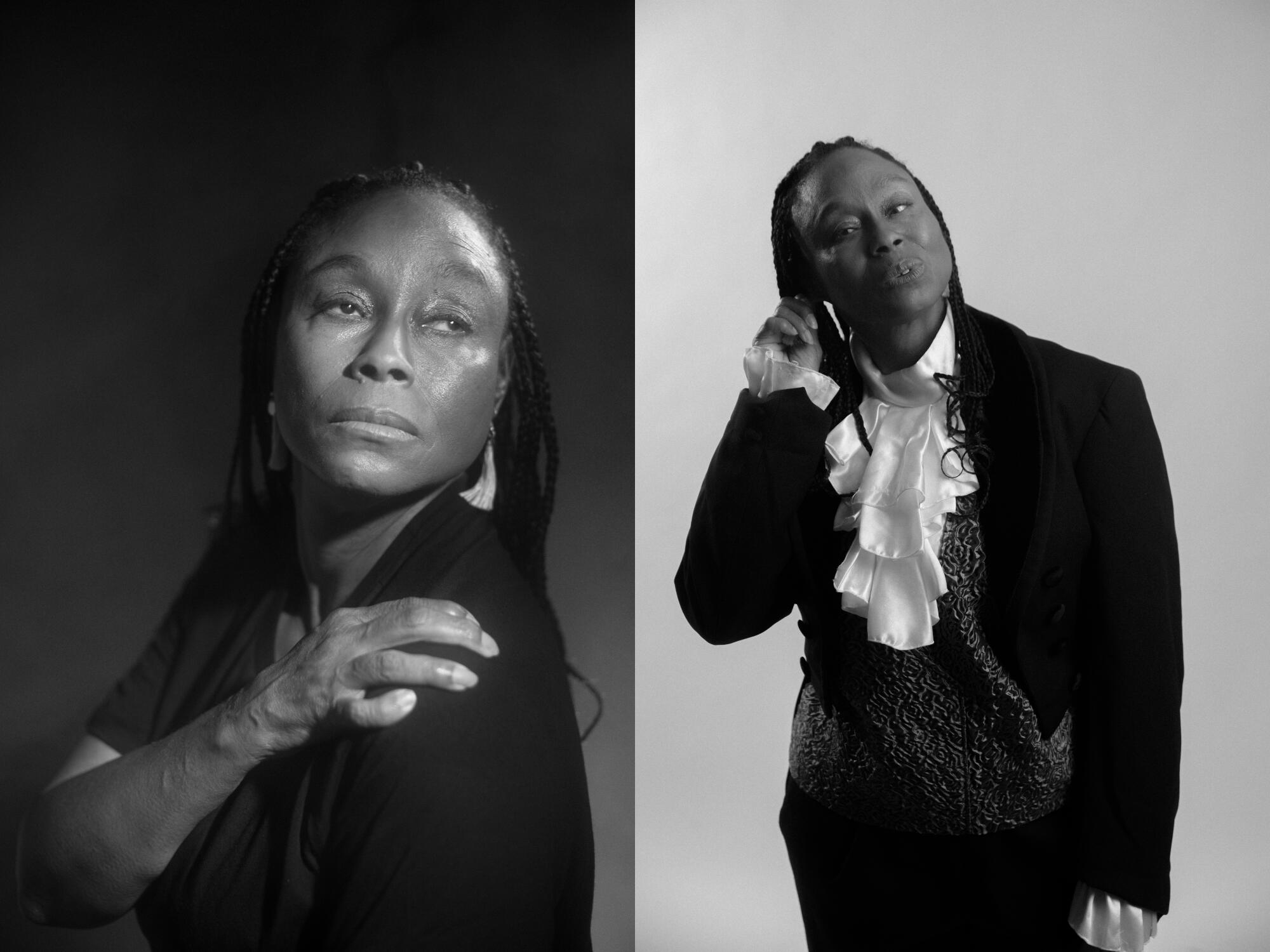
Growing up in Arkansas, Barbara Harrison was bullied a lot in school. Theatre by the Blind is “where I feel accepted,” she says. “Here, I can express myself and be anyone I want.”
To embody her character as the president of the assembly, Harrison transcends her naturally shy personality. In a scene where residents are deciding the fate of the institute, the character chairs a meeting “with an authoritarian approach,” Harrison says. “It makes me feel like I’m the boss.”
Speaking in third person, Harrison says, “Barbara is a shy person, not really bossy. She cares a lot about people.” Harrison says the role has since emboldened her to become “more assertive, more open and more expressive. More and more.”
Leela Kazerouni, 61, of Glendale
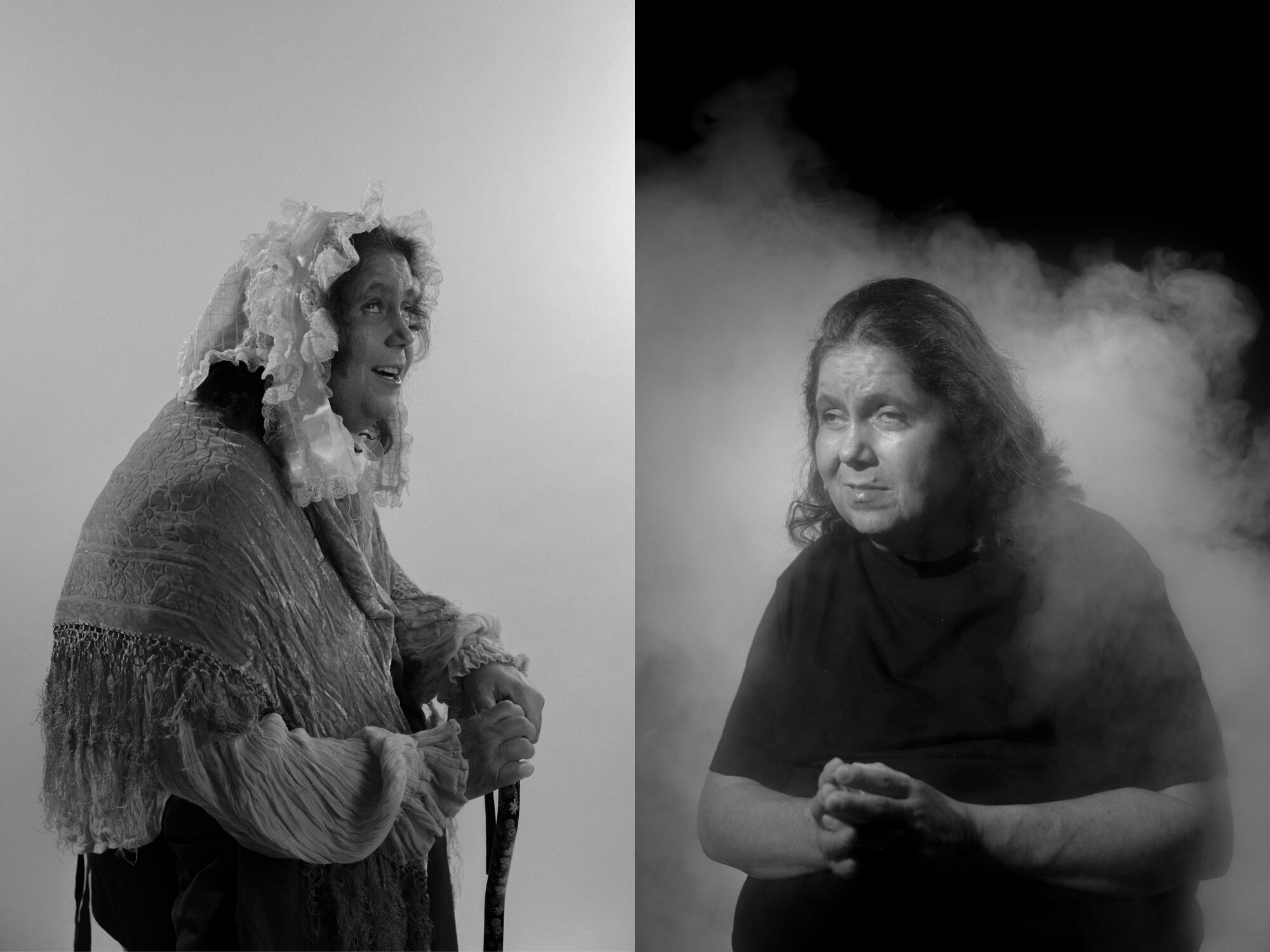
Leela Kazerouni’s father was an actor in Isfahan, Iran, throughout the 1960s as she was growing up. After he passed away, Kazerouni met people who had worked with her father. She was moved by their stories. “I wanted to keep his legacy going,” she says.
Kazerouni has been acting with Theatre by the Blind since its inception and has played dozens of characters. “Acting allows me to be myself and forget about my problems when I’m onstage,” she says.
In “The Braille Legacy,” Kazerouni plays Madame Demeziere, the institute’s stern leader. “I think it’s good to have this play to know that Louis Braille had this accident,” she says. “Because of him, all the people like myself can read and write.”
Ronnie Chism, 40, of Los Angeles (top)
Hospital receptionist
Ronnie Chism has been blind since birth. He describes learning Braille as “an interesting journey” for him. “I’m really competitive; that’s the reason I could learn Braille,” he says. “I didn’t give up — as frustrating as it was.”
While preparing for his role as Charles Henri, a teacher at the institute, Chism was inspired to “be involved and educated at the same time” as he learned more about Braille’s life. In doing so, Chism connected with his character of Henri — a man whose own journey is a bit of a slow burn. “He’s not a likable character off the top,” Chism says of Henri, “but he ends up really having compassion.”
More to Read
About this story
The biggest entertainment stories
Get our big stories about Hollywood, film, television, music, arts, culture and more right in your inbox as soon as they publish.
You may occasionally receive promotional content from the Los Angeles Times.
